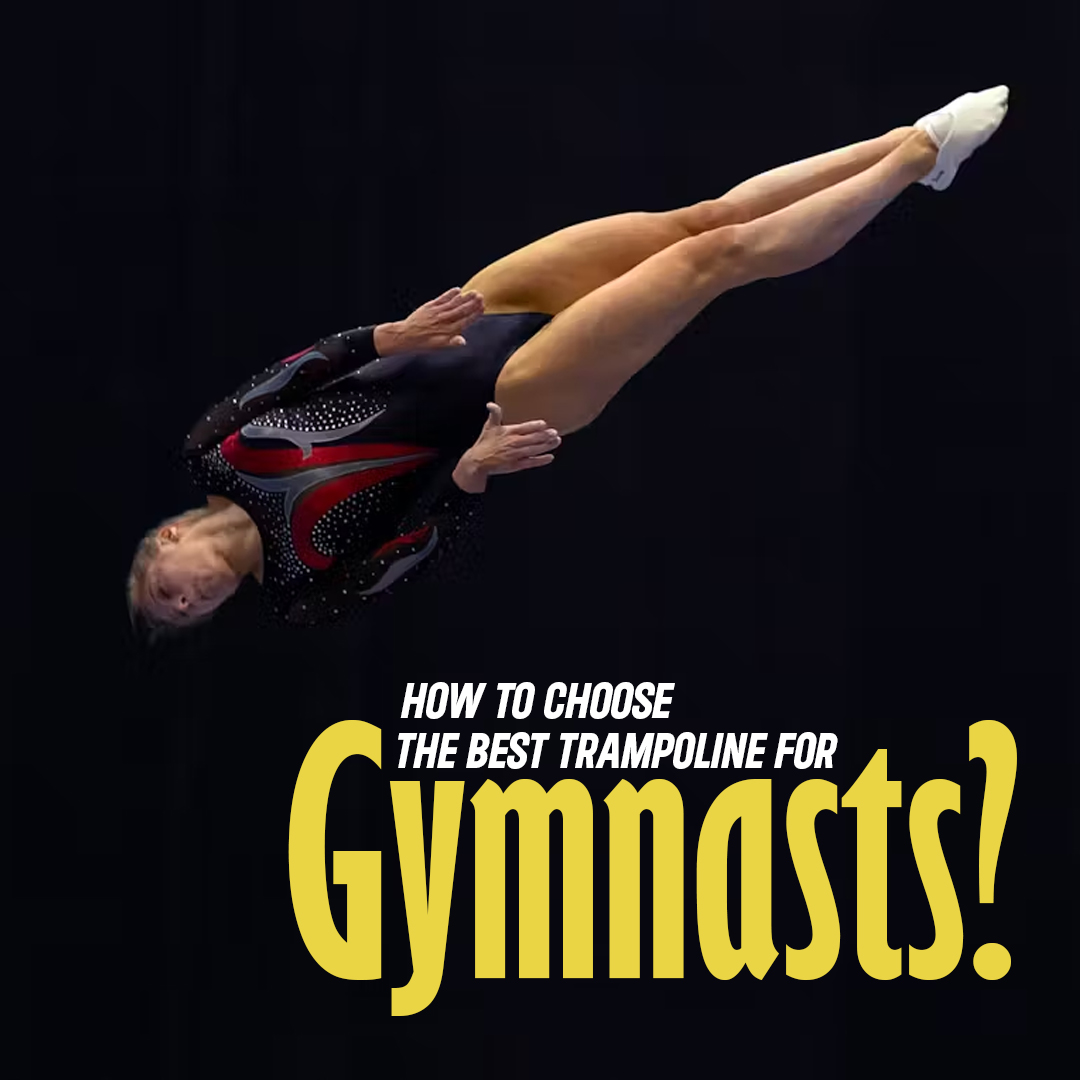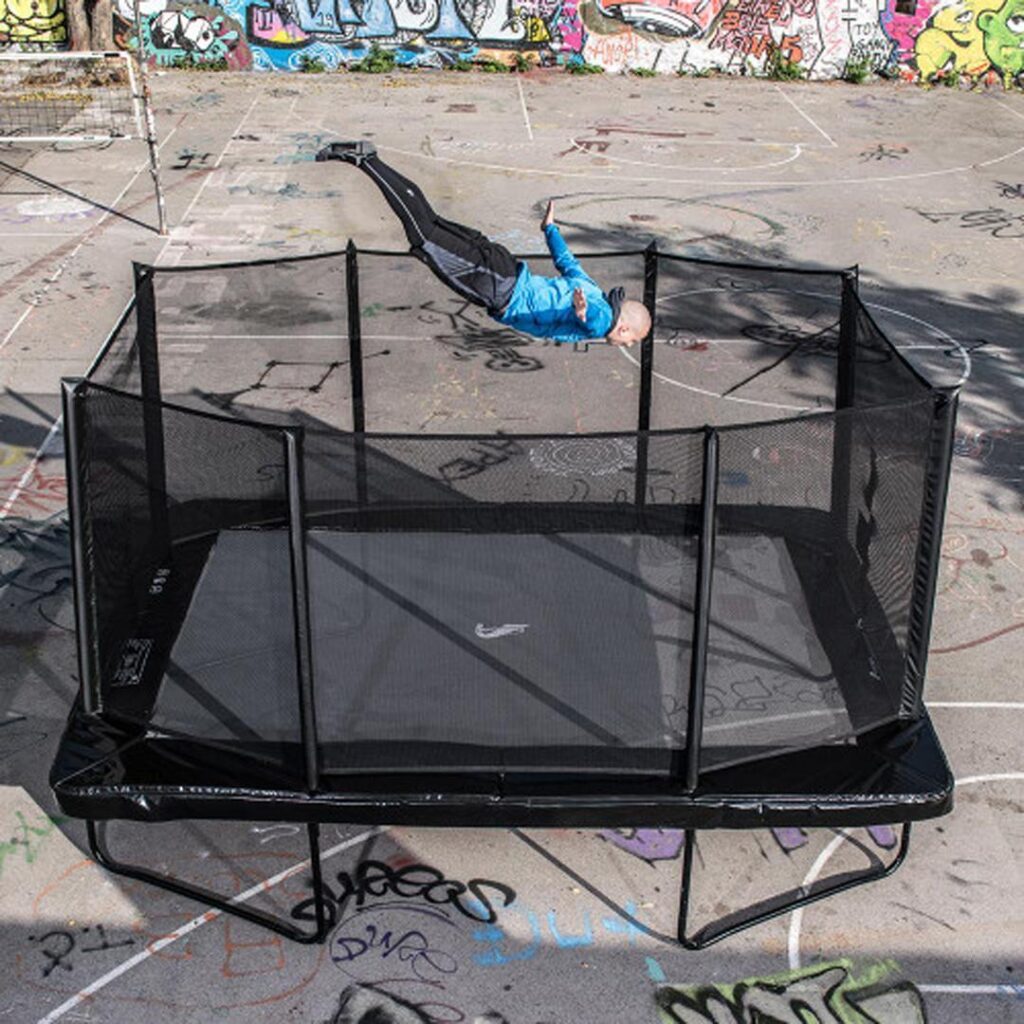
Trampolines aren’t just Children’s toys anymore; they’ve become indispensable tools for gymnasts seeking to elevate their skills to new heights. Whether you’re a budding gymnast aiming for Olympic gold or a seasoned professional refining your technique, choosing the right trampoline is paramount to your success and safety.
In this guide, we will help you choose the perfect trampoline for gymnastics training. We’ll cover types, safety features, and performance considerations. Our aim is to equip you with the knowledge you need to make an informed decision. Let’s explore trampolines and reach new heights in gymnastics.
Understanding Different Types of Trampolines
Trampolines come in various shapes and sizes, each with unique characteristics tailored to different needs and uses. The most common shapes are round and rectangular. Here’s a deeper look into these two popular types:
Round Trampolines: Benefits and Drawbacks
Benefits:
- Safety: Round trampolines are often considered safer for casual use because the circular design naturally directs the jumper to the center, reducing the risk of landing on the springs or edges.
- Cost-effective: They are generally less expensive than rectangular trampolines, making them a more accessible option for families and recreational users.
- Space-efficient: Their compact design can fit more easily into smaller backyards.
Drawbacks:
- Limited use in professional training: The bounce is less powerful and more unpredictable, which can be a drawback for gymnasts who need precise control and consistency to practice routines.
- Reduced surface area: The functional area is smaller because the edges provide less bounce, limiting the space for performing tricks safely.
Rectangular Trampolines: Why They Are Preferred for Gymnastics
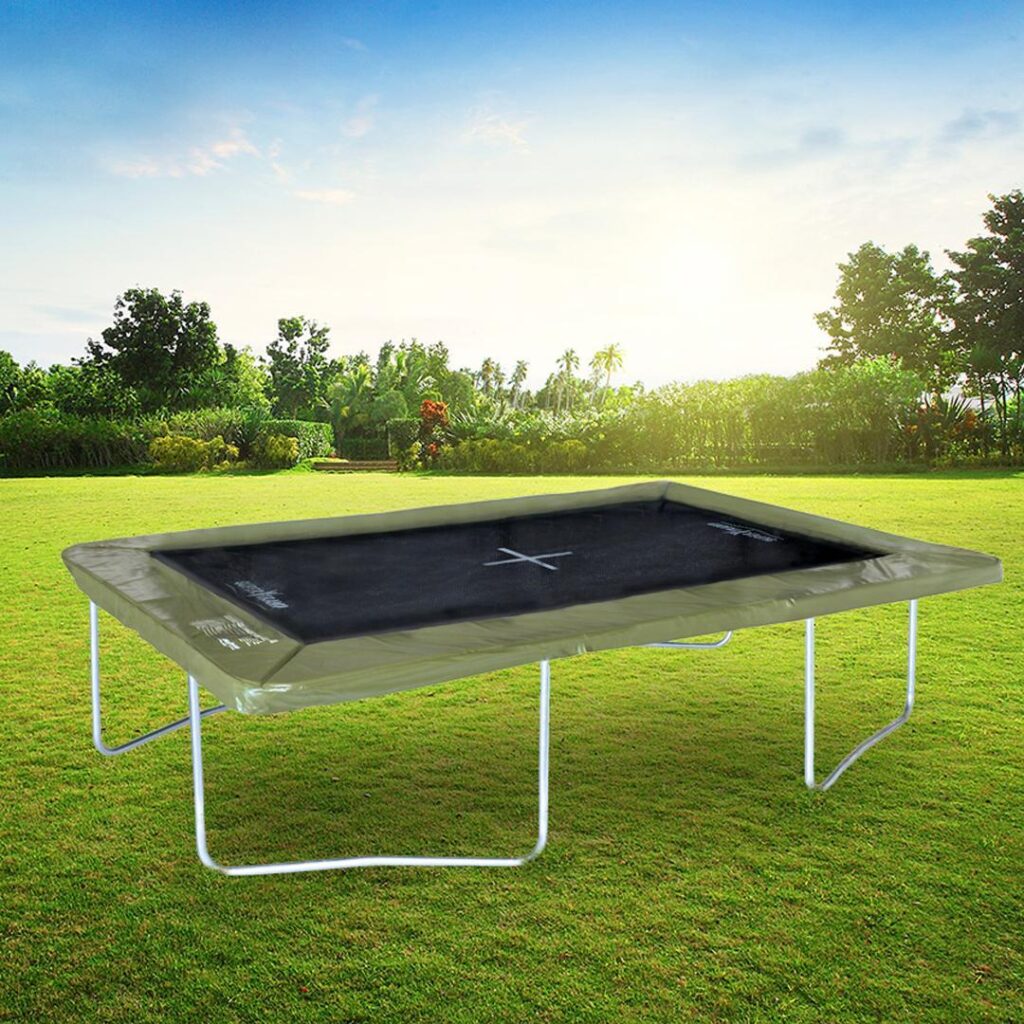
Benefits:
- Consistent bounce: Rectangular trampolines provide a more even bounce across the surface, which is crucial for gymnasts to perform complex flips and routines.
- Higher bounce: They typically allow for a higher bounce due to the arrangement of springs. This feature helps gymnasts achieve greater height for advanced maneuvers.
- Space efficiency in professional settings: The rectangular shape fits better into gymnastics clubs and training facilities, where space is optimized for safety and efficiency.
Drawbacks:
- Cost: Rectangular trampolines are usually more expensive, reflecting their specialized construction and durability.
- Safety considerations: Without the naturally centralizing bounce of round trampolines, there is a higher risk of landing on the frame or springs unless adequate safety measures are in place.
Size Matters
Selecting the right size trampoline is crucial not just for safety and comfort, but also for the effectiveness of training sessions. Here, we explore how different factors like space availability and the gymnast’s level influence the choice of trampoline size.
Space Requirements: How much space do you need for different trampoline sizes?
Before purchasing a trampoline, it’s essential to consider both the size of the trampoline itself and the required safety clearance around it:
- Minimum Clearance: At least 8 feet of unobstructed space around the Above-ground or In-ground trampoline is recommended to ensure safety.
- Indoor vs. Outdoor: For indoor setups, ensure there is sufficient height clearance — gymnasts should be able to jump without risk of hitting the ceiling. Outdoor setups should be clear of branches, fences, and other hazards.
Size Considerations:

- Small (8-10 feet in diameter): Ideal for younger children or those with limited space. Good for light recreational use, but not suitable for professional training.
- Medium (12-14 feet in diameter): Offers more room for safe jumping and basic gymnastic moves. Suitable for teenagers or active jumpers.
- Large (15+ feet in diameter): Best for serious gymnasts and athletes, providing ample space for advanced maneuvers and routines.
Gymnast’s Level: Tailoring trampoline size to the gymnast’s age and skill level
The size of the trampoline should grow with the gymnast’s skill level:
- Beginners: Smaller, round trampolines are sufficient for beginners as they provide enough space for basic jumps and are safer due to their centralizing bounce.
- Intermediate Gymnasts: Medium to large round or smaller rectangular trampolines are preferable as they allow for a greater variety of movements and a bit more power in the bounce.
- Advanced Gymnasts: Large rectangular trampolines are ideal. They support the high-impact, complex aerial tricks typical of advanced gymnastics training and competitions.
Safety Features
Safety is paramount when it comes to trampolines, particularly for gymnastics where the equipment endures more intensive use. Key safety features to consider include enclosures, padding, and the choice between spring-based or springless trampolines. Each element plays a critical role in reducing injury risks and enhancing the safety of the equipment.
Enclosures: Importance and Types
Importance:
- Enclosures are critical as they prevent jumpers from accidentally bouncing off the trampoline and sustaining injuries. This feature is essential not just for beginners but for all gymnasts, providing a safer environment to practice new and complex maneuvers.
Types:
- Internal Netting: Positioned inside the perimeter of the springs, this type of enclosure prevents gymnasts from landing on the springs, enhancing safety.
- External Netting: Wraps around the outside of the frame and springs, providing a larger active area but requiring high-quality padding on the springs to ensure safety.
Padding: Materials Used and Thickness Recommendations
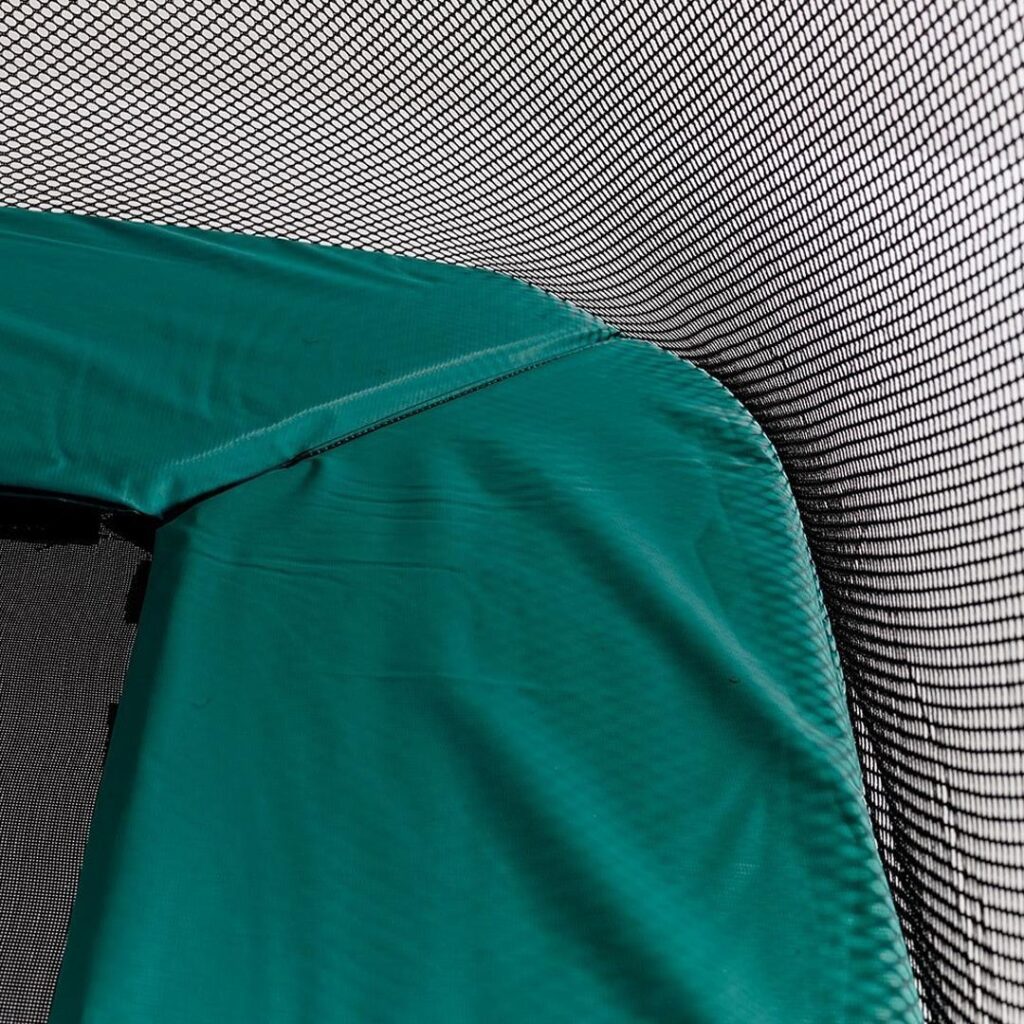
Materials Used:
- Foam Padding: Typically made from polyethylene or polyurethane, foam pads vary in density and thickness, impacting their shock-absorbing capabilities and durability.
- Rubber Padding: Durable and weather-resistant, rubber is an excellent choice for outdoor trampolines, providing reliable impact protection.
Thickness Recommendations:
- A minimum of 2 inches of dense foam padding is recommended to adequately cover springs, frames, and surrounding edges, ensuring protection against impact with these hard surfaces.
Springs vs. Springless: Safety and Performance Implications
Springs:
- Traditional Spring-based Trampolines: Offer superior bounce and are preferred by professional gymnasts. The springs should be well-covered with thick padding to prevent injury.
- Maintenance: Regular checks for rust and damage are essential to maintain safety and performance.
Springless:
- Spring-free Designs: Use rods or other mechanisms located beneath the jumping surface to eliminate spring-related injuries. These models are safer for casual use but may not provide the same level of bounce and performance demanded by professional athletes.
Performance Aspects
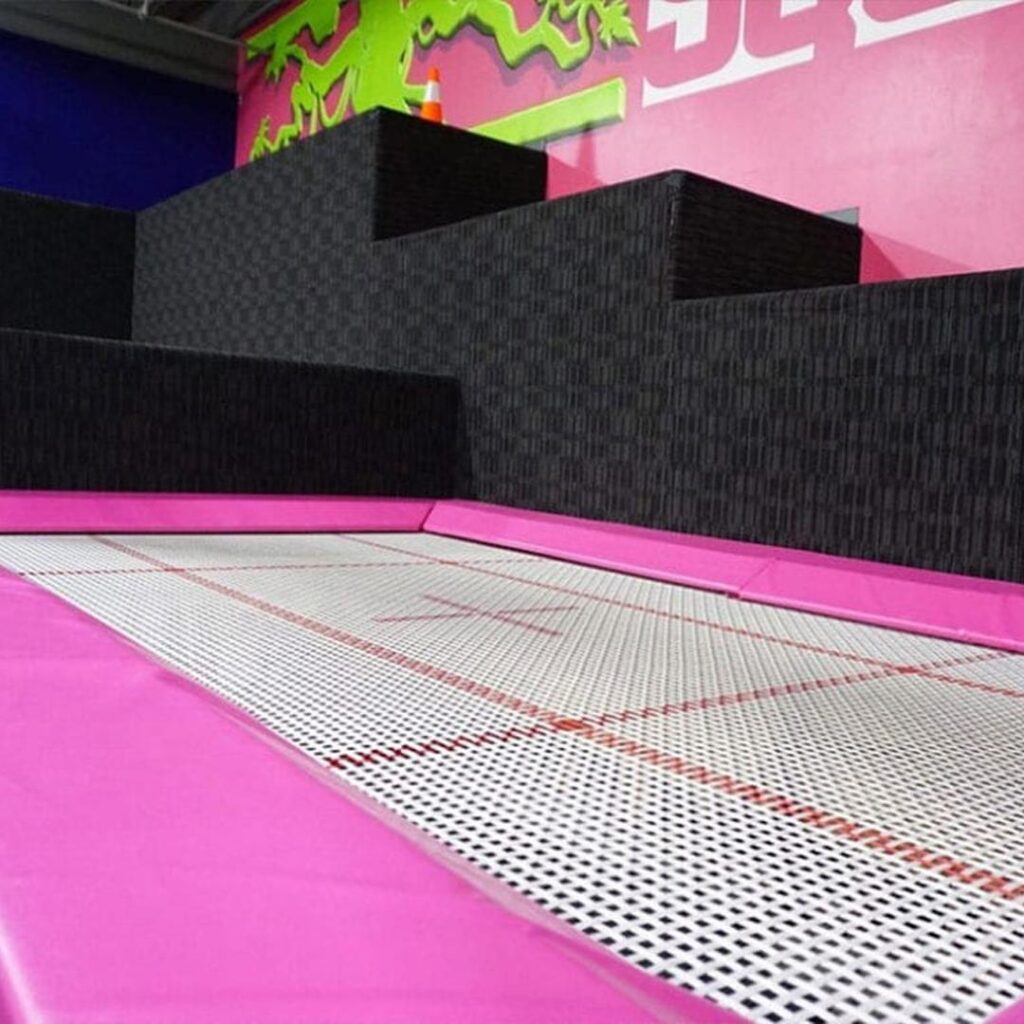
When selecting a garden trampoline for gymnastics, performance is just as critical as safety. The quality of bounce, the materials used in the trampoline’s construction, and compliance with safety certifications all play vital roles in the performance and longevity of the equipment. Understanding these aspects ensures that the trampoline not only meets safety standards but also supports the athlete’s performance needs.
Bounce Quality: How to Assess and What to Look For
How to Assess:
- Consistency: The bounce should be consistent across the entire surface. Uneven spots can indicate a problem with the springs or mat.
- Rebound: A good gymnastics trampoline will have a quick, sharp rebound. This is crucial for performing complex aerial maneuvers.
- Noise: Listen for any creaks or excessive noise during use, which can indicate loose parts or wear.
What to Look For:
- Spring Tension and Arrangement: These should be suited to the gymnast’s weight and skill level. More springs or higher-quality springs generally provide a better bounce.
- Mat Quality: The mat should be made of durable, woven material that can withstand heavy use without stretching out.
Materials Used: Impact on Performance and Durability
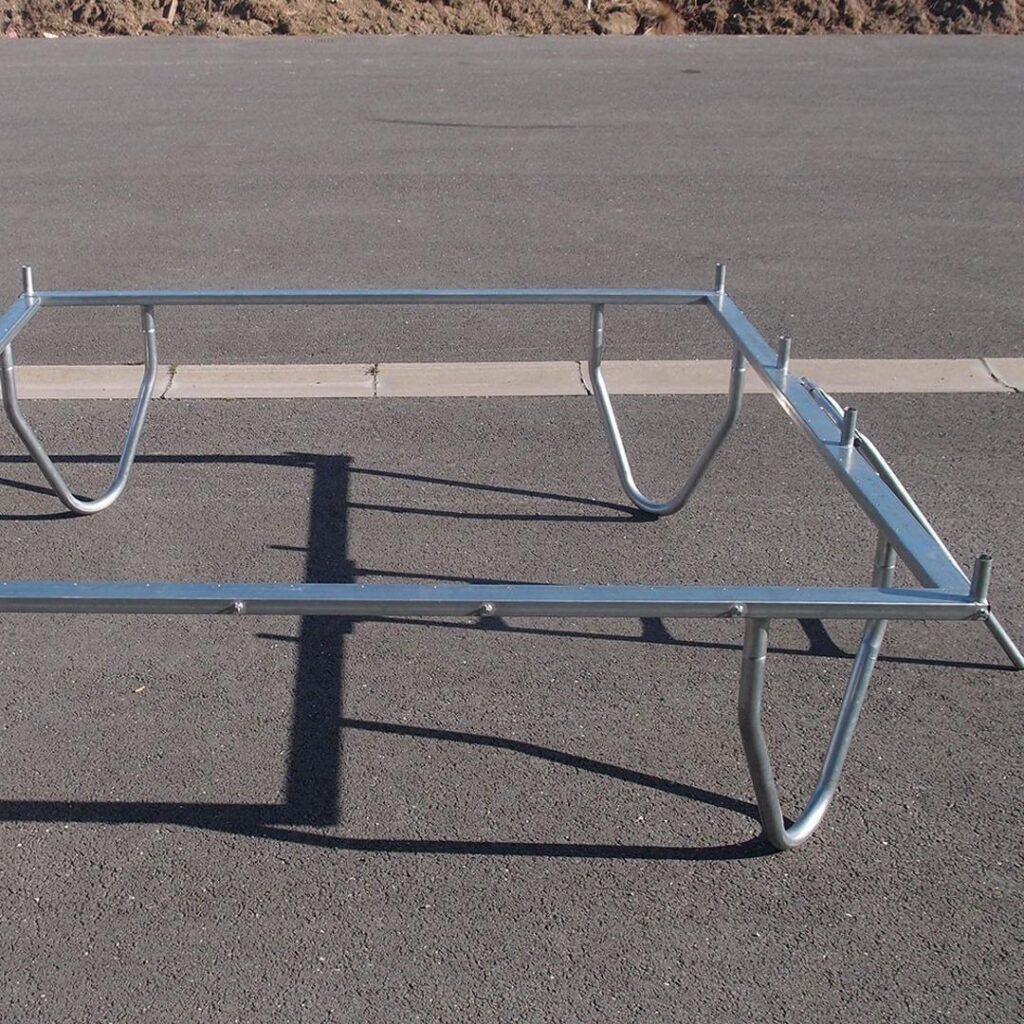
Frame:
- Steel Frames are most common and provide excellent durability and stability. Look for galvanized or powder-coated steel to prevent rust.
Mat:
- Polypropylene or Permatron Mats are preferred for their ability to withstand UV rays and moisture while providing excellent bounce characteristics.
Springs:
- Galvanized Steel Springs offer longevity and consistent performance. The length and coil of the springs can also affect the bounce quality and should be matched to the gymnast’s needs.
Certifications: Ensuring Compliance with Safety Standards
Why It’s Important:
- Certifications ensure that the trampoline meets specific safety and performance standards, which can help prevent injuries and guarantee a high-quality product. Learn more about safety certification!
Common Certifications:
- ASTM International: One of the most respected standards organizations in the world, an ASTM certification means the trampoline meets stringent safety guidelines.
- TÜV or GS Mark: A German testing service that indicates high quality and safety compliance.
Brand and Warranty
Choosing the right trampoline brand is not just about price and appearance; it also involves considering the reputation of the manufacturer, the warranty offered, and feedback from other users. These factors can greatly influence the quality, durability, and overall satisfaction with the trampoline. Here’s how to navigate these important aspects.
Leading Brands
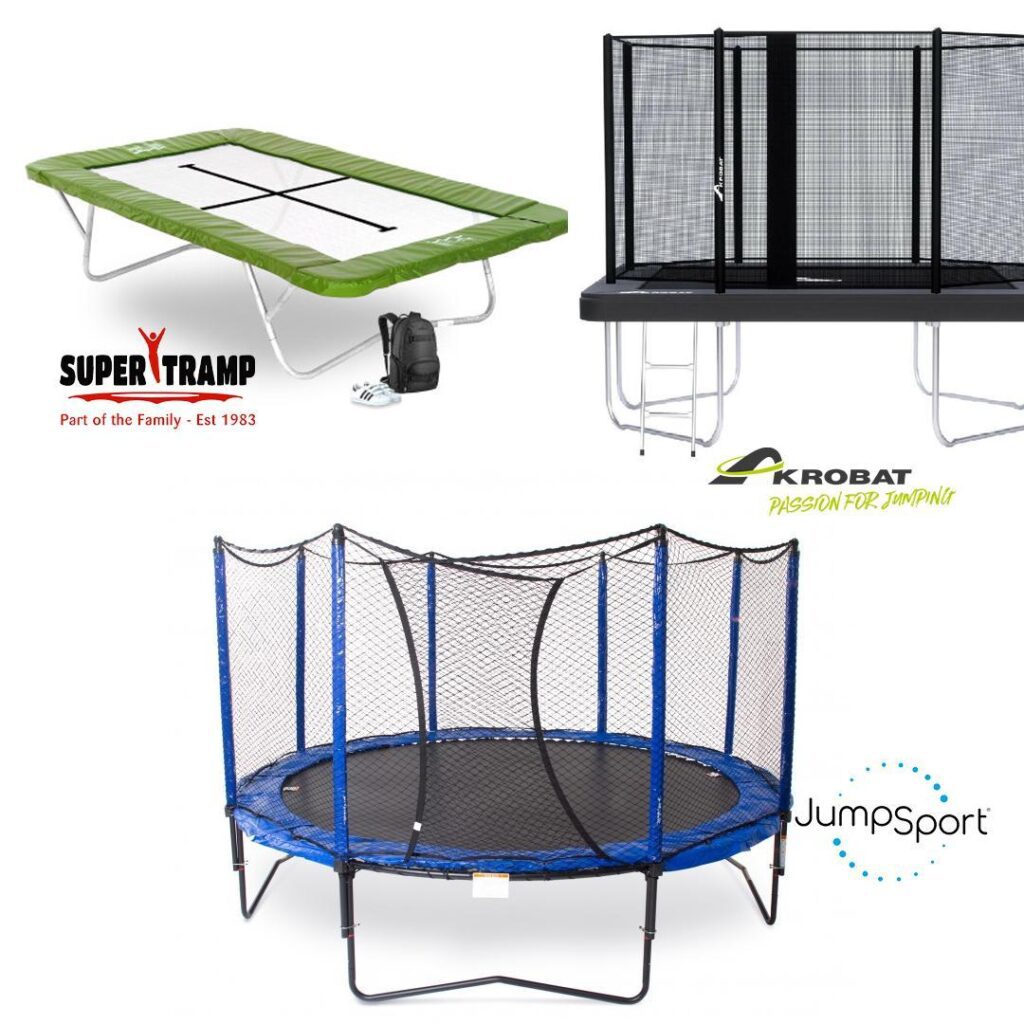
- Supertramp: Offers a wide range of trampolines at various price points, making them accessible while still maintaining a focus on safety and quality.
- Springfree: Known for its innovative springless designs which enhance safety, Springfree trampolines are often recognized for their quality and durability.
- Akrobat: Known for high-performance trampolines that are favored by gymnastics enthusiasts and professional athletes alike.
- JumpSport: Excelling in safety innovations, JumpSport trampolines often feature superior enclosure systems and patented safety technology.
Each brand has its strengths, so selection should be based on specific needs such as size, safety features, and budget.
Warranty: What Kind of Warranties Do These Brands Offer?
Types of Warranties:
- Frame Warranty: This can vary from 5 years to a lifetime, depending on the brand. A longer warranty on the frame indicates good durability.
- Mat and Spring Warranty: Usually shorter than the frame warranty, often ranging from 1 to 5 years. It covers defects in materials and workmanship.
Important Notes:
- Always check what the warranty covers. For instance, some warranties might not cover normal wear and tear or damage due to improper use.
- Consider the manufacturer’s customer service reputation. Efficient and helpful customer service can make warranty claims smoother.
Customer Reviews: Importance of Considering Other Gymnasts’ Experiences
- Real Usage Insights: Reviews can provide real-world information on how the trampoline performs under regular conditions, including durability issues or potential design flaws.
- Satisfaction Levels: Overall satisfaction ratings can help gauge if a trampoline meets the expectations of its user base.
Budget Considerations
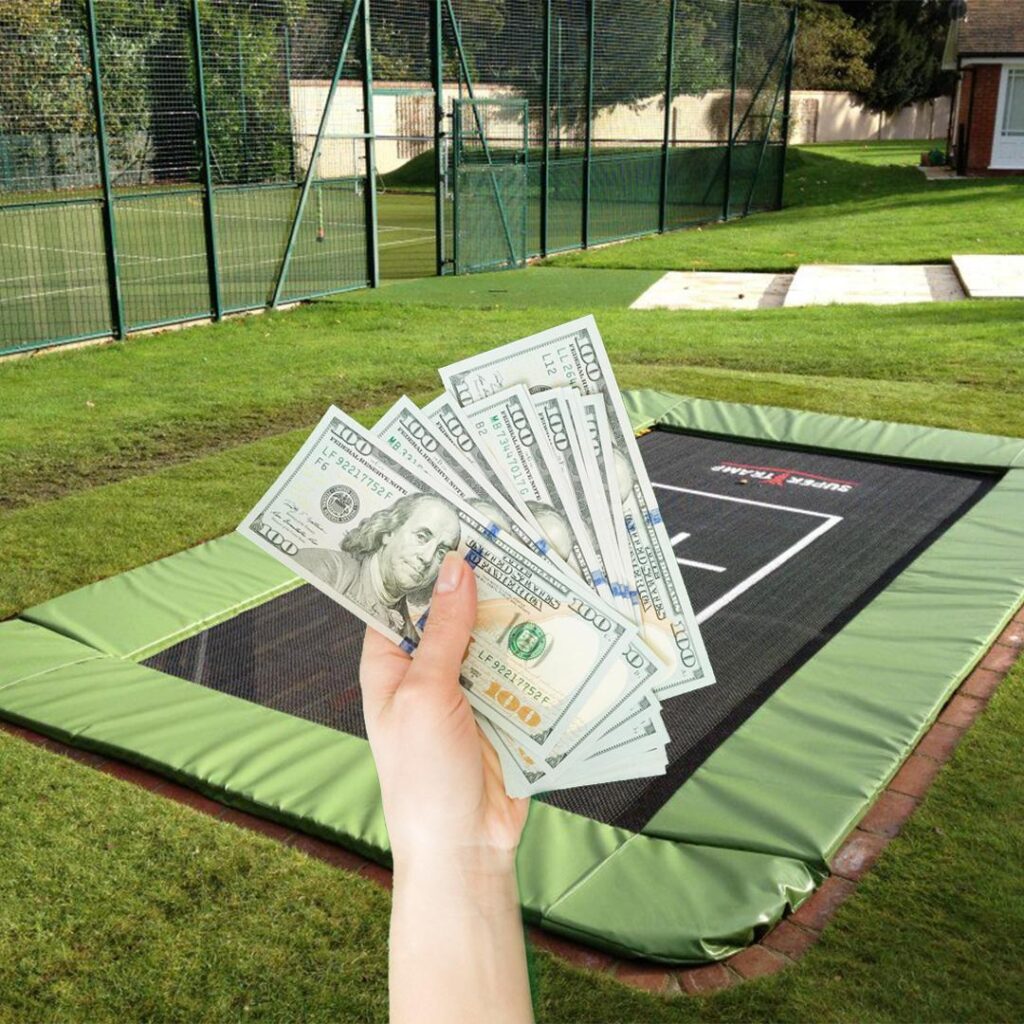
When selecting a trampoline, especially for gymnastic use, budget considerations play a crucial role. It’s essential to strike the right balance between cost and quality, ensuring the trampoline is safe, durable and meets the performance needs of the gymnast. Understanding how investing in a high-quality trampoline can benefit in the long term will help in making an informed decision.
Cost vs. Quality: Finding the Right Balance
Balancing Act:
- Higher Initial Cost vs. Longevity and Safety: While high-quality trampolines come with a higher initial price tag, they typically offer better safety features, superior materials, and longer warranties. These factors contribute to a longer lifespan and better performance, which can be more cost-effective in the long run.
- Avoiding False Economy: Opting for cheaper, lower-quality trampolines can lead to frequent replacements or repairs, potentially making them more expensive over time. Moreover, they often lack adequate safety features, which could increase the risk of injuries.
Long-Term Investment: Understanding the Long-Term Benefits of Investing in a High-Quality Trampoline
Benefits of High-Quality Trampolines:
- Durability: Built with superior materials, these trampolines are more resistant to wear and tear, weather conditions, and frequent use.
- Safety: Enhanced safety features like robust enclosures, high-quality padding, and sturdy frames contribute to a safer experience, reducing the risk of accidents.
- Performance: A better-quality bounce and more stable construction enhance performance, important for gymnastic practices and routines.
- Resale Value: Higher-quality trampolines tend to maintain a better resale value if you choose to upgrade or sell later.
Conclusion
Choosing the best trampoline for gymnasts involves careful consideration of various factors. It’s crucial to understand the different types of trampolines available, consider the size and safety features needed, assess performance aspects, and recognize the reputation and warranties offered by brands. Balancing cost and quality is essential to ensure a wise investment in a trampoline that is safe, durable, and meets the performance needs of gymnasts. By leveraging interactive tools and thoughtful analysis, buyers can make informed decisions that maximize both budget and benefits, ensuring long-term satisfaction and safety.

